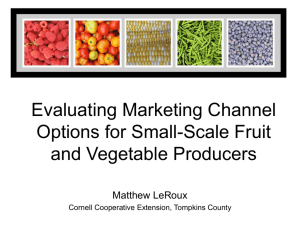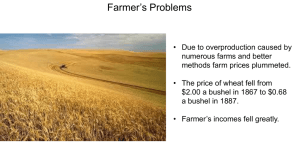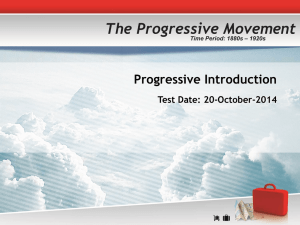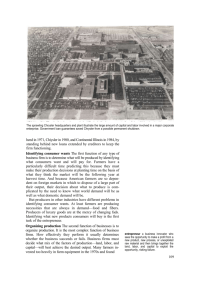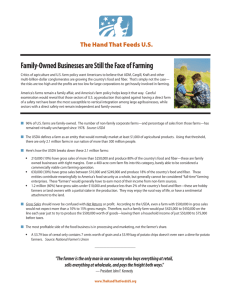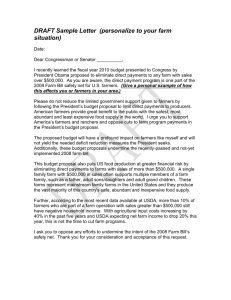Agriculture, Part 2
advertisement
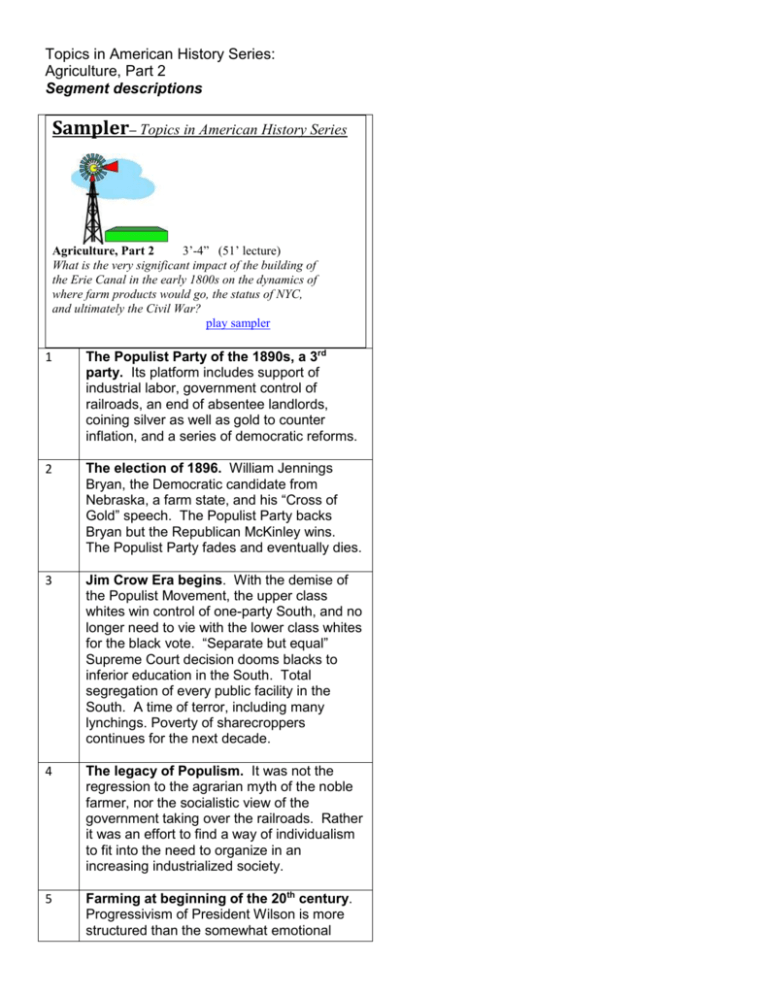
Topics in American History Series: Agriculture, Part 2 Segment descriptions Sampler– Topics in American History Series Agriculture, Part 2 3’-4” (51’ lecture) What is the very significant impact of the building of the Erie Canal in the early 1800s on the dynamics of where farm products would go, the status of NYC, and ultimately the Civil War? play sampler 1 The Populist Party of the 1890s, a 3rd party. Its platform includes support of industrial labor, government control of railroads, an end of absentee landlords, coining silver as well as gold to counter inflation, and a series of democratic reforms. 2 The election of 1896. William Jennings Bryan, the Democratic candidate from Nebraska, a farm state, and his “Cross of Gold” speech. The Populist Party backs Bryan but the Republican McKinley wins. The Populist Party fades and eventually dies. 3 Jim Crow Era begins. With the demise of the Populist Movement, the upper class whites win control of one-party South, and no longer need to vie with the lower class whites for the black vote. “Separate but equal” Supreme Court decision dooms blacks to inferior education in the South. Total segregation of every public facility in the South. A time of terror, including many lynchings. Poverty of sharecroppers continues for the next decade. 4 The legacy of Populism. It was not the regression to the agrarian myth of the noble farmer, nor the socialistic view of the government taking over the railroads. Rather it was an effort to find a way of individualism to fit into the need to organize in an increasing industrialized society. 5 Farming at beginning of the 20th century. Progressivism of President Wilson is more structured than the somewhat emotional Topics in American History Series: Agriculture, Part 2 Segment descriptions Populist Movement, and is less sympathetic to small farmers. Farmers experience prosperity during WW I supplying the military, and then sending farm goods to starving Europe after the war. 6 Farm depression in the 1920s. A prosperous time in general, the 1920s begin a farm depression. The Army demobilizes. Europe recovers. Markets shrink. Competition from other world markets. Farm prices drop and continue to drop through the 1920s into the 1930s.. 7 Great Depression of the 1930s. This adds to farmers’ already dire situation. The Great Plains Dust Bowl due to lack of rain and misuse of farmland destroys farms, causing a great migration west. In 1900 dire conditions in the South causes migration to northern cities by blacks and whites who are often met with great hostility in the competition for jobs. 8 FDR and the New Deal in 1933. Attempts to help farmers. Intentional scarcities to raise prices to farmers. Failure: non-compliance, circumvention, lack of oversight. Sharecroppers not covered, suffer. Law later declared unconstitutional. Concern for the large farmer at the expense to the small farmer. Farmers migrate west or at times resist economic depression during the 1930s. . New farm prosperity. Coming of WW II and end of drought. Feeding soldiers. Permanent migration to cities for high paying defense jobs, replaced by poor migrant farmers from Mexico living under dire conditions, continuing into the post-war era. Myth of romanticizing farming. . 9. 10 Post-WW II American agriculture. Some benefit exporting food to war-devastated Europe. Subsidies continue but large farms benefit more than small ones. Future of family farms undermined by children leaving. Competition of large agribusiness. Tragedy of family farms’ overwhelming debt burden. Agribusinesses thrive, also compete internationally. Many Mexican small farms cannot survive, forcing migrant workers to the U.S. Topics in American History Series: Agriculture, Part 2 Segment descriptions 11 Agriculture attempts to adapt to modernity. Many approaches, with a mix of successes and failures. Issues will remain for a long time to come.


